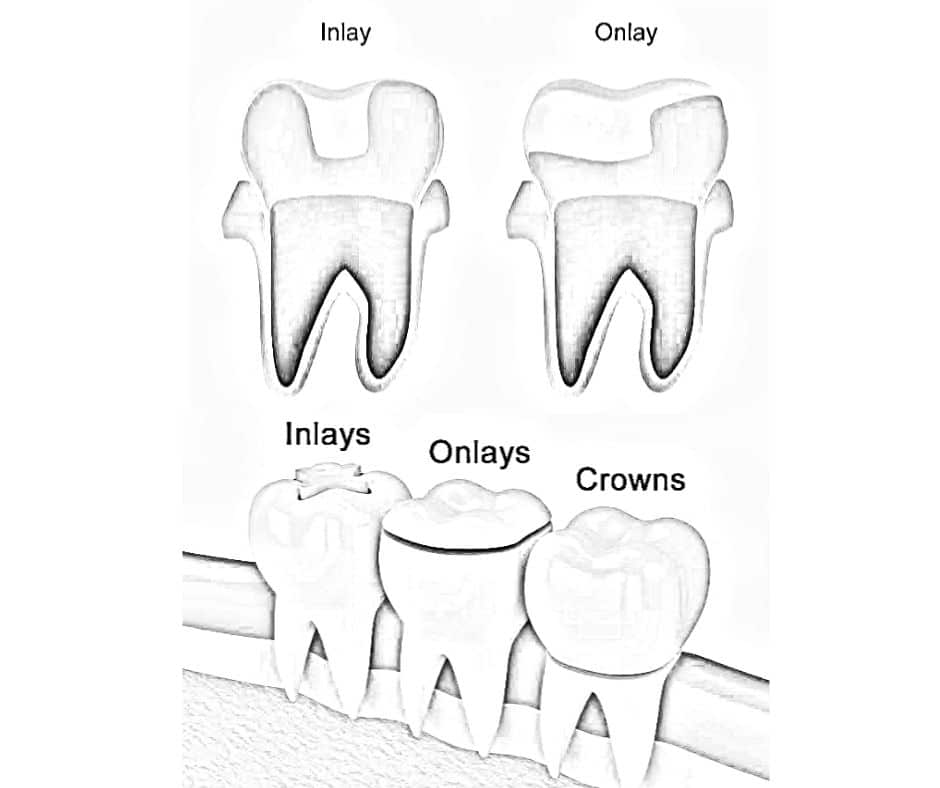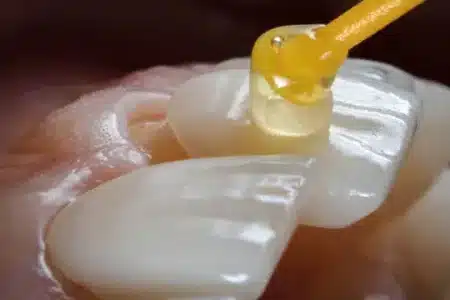When it comes to dental restorations, onlays offer an effective and aesthetically pleasing solution for damaged or decayed teeth. Onlays are an alternative to traditional dental fillings, providing a more extensive and durable restoration that covers a larger portion of the tooth’s surface.
In this comprehensive guide, we will delve into the world of Onlay dental restorations, exploring their benefits, the procedure, materials used, aftercare, and more.
What is Onlays?
Onlays, also known as partial crowns, are custom-made dental restorations designed to repair teeth that have sustained moderate to extensive damage or decay. They are typically crafted from tooth-coloured materials such as porcelain, composite resin, or ceramic, ensuring seamless integration with the natural tooth structure.
Differences Between Onlays and Inlays
While both onlays and inlays serve the purpose of restoring damaged teeth, there is a fundamental difference between the two. Onlays are used when the restoration extends beyond the cusps (raised points) of the tooth, covering a larger surface area. Inlays, on the other hand, are used when the damage or decay is confined within the cusps.
When Are Onlays Used?
They are recommended in various situations, including:
- Large cavities or decay that is too extensive for traditional fillings.
- Fractured or broken teeth, especially when the damage extends beyond the cusps.
- Teeth with old or failing fillings that require replacement.
- Cosmetic enhancements, such as correcting tooth discolouration or improving shape and contour.
Advantages of Onlay Dental Restorations
Choosing onlays as a dental restoration option offers several benefits:
- Preservation of natural tooth structure: It conserve as much healthy tooth structure as possible, minimizing the need for extensive tooth preparation.
- Durability and strength: Onlays are highly durable and can withstand chewing forces, providing long-lasting restoration.
- Aesthetics: Tooth-colored materials used create a seamless blend with natural teeth, resulting in a beautiful and natural-looking smile.
- Customized fit: They are custom-made to fit precisely onto the prepared tooth, ensuring a comfortable and secure restoration.
- Protection and reinforcement: It provide added strength and support to weakened teeth, reducing the risk of further damage or fracture.
- Minimal sensitivity: Onlays can help reduce tooth sensitivity that may arise from exposed dentin or damaged enamel.
Read Also: Convenient and High-Quality Dental Implants: ClearChoice Locations Near You
Types of Materials Used for Onlays
It can be fabricated from various materials, including:
- Porcelain: Porcelain onlays are highly durable, stain-resistant, and closely resemble natural teeth.
- Composite resin: Composite resin onlays are a more affordable option, offering excellent aesthetics and durability.
- Ceramic: Ceramic onlays combine strength and aesthetics, providing an optimal blend of durability and natural appearance.
DENTAL INLAYS AND ONLAYS TREATMENT: The Onlay Placement Process
A dental inlay and onlay will typically be set within the course of 2 appointments. The first will entail prepping your tooth and taking dental impressions, and the next will be to the last fitting of your restoration.
At the beginning of your first appointment, a local anesthetic will be applied to numb the treatment area, and the doctor will start by cleaning out regions of decay. Stronger methods of sedation could be utilized for those who have stress or a strong gag reflex.
The placement of onlay restorations typically involves the following steps:
- Examination and preparation: The dentist will conduct a thorough examination, evaluate the extent of damage, and prepare the tooth by removing any decayed or damaged portions.
- Impression and temporary restoration: An impression of the prepared tooth is taken, which will be used to create a custom onlay. A temporary restoration may be placed to protect the tooth until the final restoration is ready.
- Custom fabrication: The impression is sent to a dental laboratory, where skilled technicians fabricate the onlay to precisely fit the tooth’s dimensions and contours.
- Bonding and final placement: Once the onlay is ready, the temporary restoration is removed, and the permanent onlay is bonded to the tooth using dental adhesive. The fit and bite are carefully checked, and any necessary adjustments are made.
Aftercare and Maintenance of Onlays

To ensure the longevity and functionality of your onlays, it is essential to follow proper aftercare practices, including:
- Maintain good oral hygiene: Brush your teeth at least twice a day, floss daily, and use an antimicrobial mouthwash to keep the restoration and surrounding teeth clean.
- Avoid excessive force or pressure: Avoid habits such as teeth grinding or biting on hard objects, as they can damage the onlays.
- Regular dental check-ups: Visit your dentist regularly for routine examinations and professional cleanings to monitor the condition of your onlays and address any potential issues promptly.
INSURANCE COVERAGE
Dental inlays and onlays are a frequent process of dental cavities and other difficulties so they are typically covered by insurance. Your dentist will speak with your health insurance to get your particular policy before calculating your own personal expenses. The dentist will work with you to customize your treatment with restoration materials that fit in your budget and requirements. In the consultation, Doctor will discuss price quotes and payment forms they accept, for example, medical finances.
Potential Risks and Complications
Although onlay dental restorations are generally safe and effective, there are some potential risks and complications to be aware of, such as:
- Allergic reactions to the materials used.
- Tooth sensitivity, especially immediately after the placement of the onlay.
- In rare cases, onlay failures, such as fracture or dislodgement.
Cost of Onlay Dental Restorations
The cost of onlay dental restorations can vary depending on various factors, including the location, complexity of the case, materials used, and the dentist’s expertise. It is best to consult with your dentist, who can provide a personalized treatment plan and discuss the associated costs.
Conclusion
Onlay dental restorations offer a reliable and aesthetically pleasing solution for damaged or decayed teeth. With their ability to preserve natural tooth structure, durability, and customized fit, onlays provide long-lasting protection and enhance the appearance of your smile.
By following proper aftercare and regularly visiting your dentist, you can enjoy the benefits of onlays for years to come, restoring your confidence and oral health.
FAQ 1: Q: What is an onlay dental restoration?
A: An onlay dental restoration, also known as a partial crown, is a type of dental restoration that covers and protects a damaged or decayed tooth. It involves placing a custom-made restoration on the chewing surface of the tooth, extending over one or more cusps.
FAQ 2: Q: When is an onlay dental restoration recommended?
A: An onlay dental restoration is recommended when a tooth has extensive damage or decay that cannot be effectively repaired with a dental filling but does not require a full dental crown. It is a conservative approach that preserves as much of the natural tooth structure as possible.
FAQ 3: Q: How is an onlay dental restoration different from a dental filling?
A: An onlay restoration is different from a dental filling in that it covers a larger portion of the tooth's surface, including one or more cusps. It provides greater strength and protection compared to a filling, making it suitable for restoring more extensive damage or decay.
FAQ 4: Q: What materials are used for onlay dental restorations?
A: Onlay dental restorations can be made from various materials, including porcelain, composite resin, or gold. The choice of material depends on factors such as aesthetic preferences, durability requirements, and the location of the tooth in the mouth.
FAQ 5: Q: How long does an onlay dental restoration last?
A: The longevity of an onlay dental restoration depends on several factors, including the material used, oral hygiene practices, and biting forces. On average, well-maintained onlays can last for 10 to 15 years or even longer. Regular dental check-ups and proper oral care can help prolong their lifespan.





